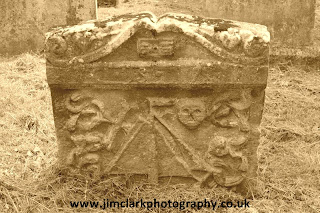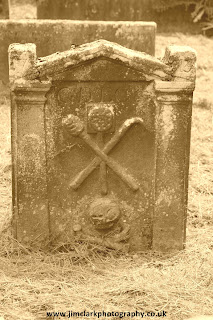Tulliallan Tombstones, Fife, Scotland
Info Post
18th-century Scottish gravestones were almost always oriented east to west. The part which contains the identification of the cadaver usually facing towards the Holy Land.
The height of 18th-century Scottish Lowland gravestones can be anywhere between 60 cm and 100 cm. The Scottish Lowland gravestones are predominatly made from sandstone, which is easy to carve, but easily weathered, this became the preferred gravestone material in Scotland.
This period also became the most ambitious for headstone carving. Indeed, it was during this century that the more traditional style gravestone became standard. It took a further century for the Lowland style gravestone to become established in the Highland region of Scotland.
An amazing gallery of Lowland Scottish gravestone carvings, dating from the late 1600s to the early 1800s, can be seen to this day at Woodlea Burial Ground in Kincardine-on-Forth. Next door to the Tulliallan Scottish Police College.
Traditional symbols of mortality, such as crossed bones and hourglasses are everywhere. Kincardine was traditionally a port, nautical symbols of ships and anchors are especially evident. But you will find all trades represented here, including stones in memory of masons, tailors, gardeners and even a woodsman felling a tree.
Access to the burial grounds can be obtained by borrowing the gate key from the Old Bridge Café in town.






















0 comments:
Post a Comment